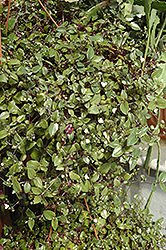Plant Finder
Bridal Veil Spiderwort
Tradescantia 'Bridal Veil'
Height: 10 inches
Spacing: 8 inches
Sunlight:
![]()
![]()
Hardiness Zone: 4b
Description:
This variety is excellent as a groundcover in a dappled sun area, and is grown primarily for its colorful foliage; its cascading form works well with hanging baskets, or draped from garden walls; great easy care indoor plant as well
Ornamental Features
Bridal Veil Spiderwort has masses of beautiful clusters of white flowers at the ends of the stems from early to late summer, which are most effective when planted in groupings. Its attractive glossy pointy leaves emerge lime green in spring, turning grayish green in color with curious purple undersides throughout the season.
Landscape Attributes
Bridal Veil Spiderwort is an herbaceous perennial with a ground-hugging habit of growth. Its relatively fine texture sets it apart from other garden plants with less refined foliage.
This is a relatively low maintenance plant, and is best cleaned up in early spring before it resumes active growth for the season. It is a good choice for attracting butterflies to your yard, but is not particularly attractive to deer who tend to leave it alone in favor of tastier treats. It has no significant negative characteristics.
Bridal Veil Spiderwort is recommended for the following landscape applications;
- Mass Planting
- Border Edging
- General Garden Use
- Naturalizing And Woodland Gardens
Planting & Growing
Bridal Veil Spiderwort will grow to be about 10 inches tall at maturity, with a spread of 10 inches. When grown in masses or used as a bedding plant, individual plants should be spaced approximately 8 inches apart. Its foliage tends to remain low and dense right to the ground. It grows at a fast rate, and under ideal conditions can be expected to live for approximately 10 years. As an herbaceous perennial, this plant will usually die back to the crown each winter, and will regrow from the base each spring. Be careful not to disturb the crown in late winter when it may not be readily seen! As this plant tends to go dormant in summer, it is best interplanted with late-season bloomers to hide the dying foliage.
This plant does best in partial shade to shade. It requires an evenly moist well-drained soil for optimal growth. It is not particular as to soil type or pH. It is highly tolerant of urban pollution and will even thrive in inner city environments. Consider covering it with a thick layer of mulch in winter to protect it in exposed locations or colder microclimates. This particular variety is an interspecific hybrid. It can be propagated by division; however, as a cultivated variety, be aware that it may be subject to certain restrictions or prohibitions on propagation.




